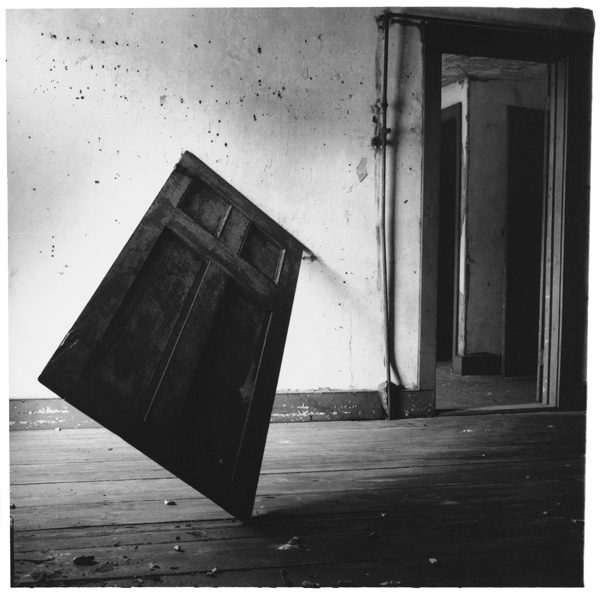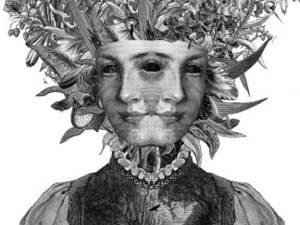The work of the late photographer Francesca Woodman (1958-1981) is renowned for its distinct and innovative vision. Her black and white imagery exudes a unique sense of mystery and beauty that at once compels and disarms her audiences. With such a short career, it is always astounding to see how much Woodman managed to achieve in her practice and how important this work remains today.
In an exhibition at Victoria Miro, the first to be held at their Mayfair site, the photographer’s work is considered for her use of abstract geometrical form and the compositional motifs she consistently employed. This is an interesting and alternative new insight into her oeuvre, which typically has been the subject of discussion for her use and representation of surreal and symbolic imagery.
The main body of the exhibition is filled with 8 x 10 black and white prints. Some of the pieces are particularly well recognised, alongside another 10 works newly released from the artist’s estate. These images play with the form of a zigzag: in the shape and positioning of Woodman’s body, light paths, material objects and through the use of framing.
The photograph as a piece of art, typically perceived in terms of horizontal and vertical planes, is contradicted by this investigation of strong, bold lines and angles that dissect each frame from corner to corner. In her use of such lines, Woodman seeks to center disparate subjects, whether this is her body immersed in her surroundings, a door unhinged seemingly floating against a wall or an open window beaming diagonal lines of light onto corrugated board. George Woodman, the artist’s father, is quoted as noting: “Domination by a zig-zag is very rare… It creates a world of flux without horizon, a rhythmic oscillation.”
His consideration of this patterns use seems a particularly apt analysis of Woodman’s work. The urban, harsh and decaying settings that are habitually inhabited are indeed worlds of uncertainty and change. Pinioned within them then are Woodman herself and other surrounding objects, that creates a sense of movement contradictory to the static conventionality of a photograph and the captured moment.
This notion of flux is also embodied within two futher works: Zig Zag Study and Zig Zag. The former is a long panorama of 13 images interlinked by rigid “V” shapes, that crosses from a pair of out turned feet, through necklines of dresses, the side of a blanket and the corners of elbows. Woodman has scrawled over this line in a rough outline of cotton thread that highlights a rigorously structured path, across imagery that is personal and intimate. Similarly the second work is a close study of a back, wearing a low scoop cut dress, draped fabric falls from the top of the image and continues its pattern into the next frame.
Woodmans pioneering style and technique has made her one of America’s most notable and well-respected photographers of the late 20th century. This exhibition highlights her play with the formalities of image making, offering a new understanding to the interesting and enduringly provocative work she created in her lifetime.
Francesca Woodman: Zigzag, until 4 October, Victoria Miro Mayfair, 14 St George Street, London W1S 1FE.
Maresa Harvey
Credits
1. Francesca Woodman, Untitled, Providence, Rhode Island, 1976 (P.057) Gelatin silver estate print 20.3 x 25.4 cm
8 x 10 in (FW 519).





